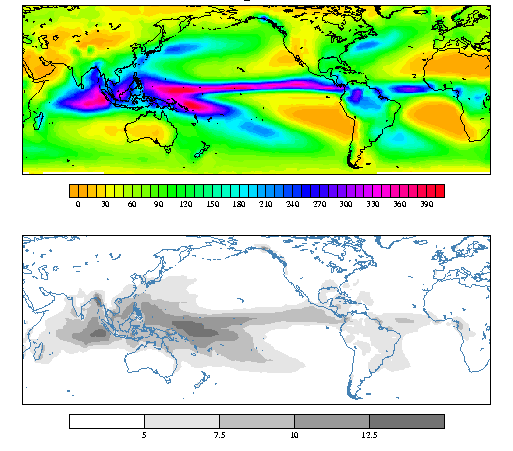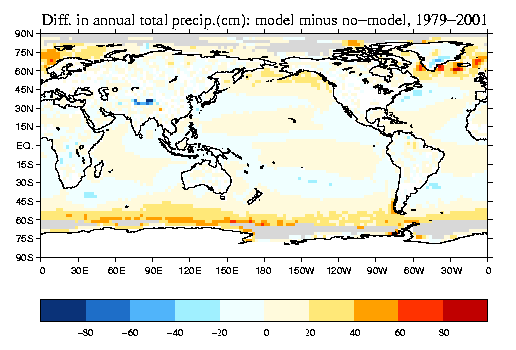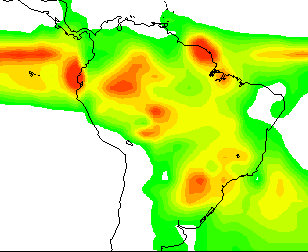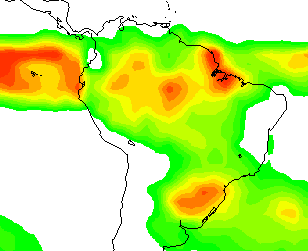
These datasets are prepared by Pingping Xie of NOAA NCEP.
There are two merged precipitation data sets: 1) Rain gauge, 5 satellite estimates( GPI, OPI, SSM/I scattering, SSM/I emission and MSU), and numerical model predictions.
A comparison of the CMAP and Global Precipitation Climatology Project
(GPCP) merged precipitation datasets is given by:
Yin, X., A. Gruber, and P. Arkinc, 2004: Comparison of the GPCP
and CMAP Merged Gauge-Satellite Monthly Precipitation Products for the
Period 1979-2001. J. Hydromet., 5, 1207-1222.

The standard version of this dataset is constructed from rain gauge and satellite measurements. The "enhanced" version also includes model precipitation. The following analysis, the difference of the mean with and without model precipitation, shows that the largest influence of the model precipitation is in the highest latitudes (near and over ice).



The data:
References:
Xie, P., and P. A. Arkin, 1997: Global Precipitation: A 17-year monthly
analysis based on gauge observations, satellite estimates, and
numerical model outputs. Bull. Amer. Meteor. Soc., 78,
2539-2558.
Janowiak, J. E. and P. Xie, 1999: CAMS-OPI: A global satellite-rain
gauge merged product for real-time precipitation monitoring
applications, J. Climate, 12, 3335-3342.
Questions concerning the method used to merge the preciptation estimates should be directed to Pingping Xie ( Pingping.Xie@noaa.gov ).